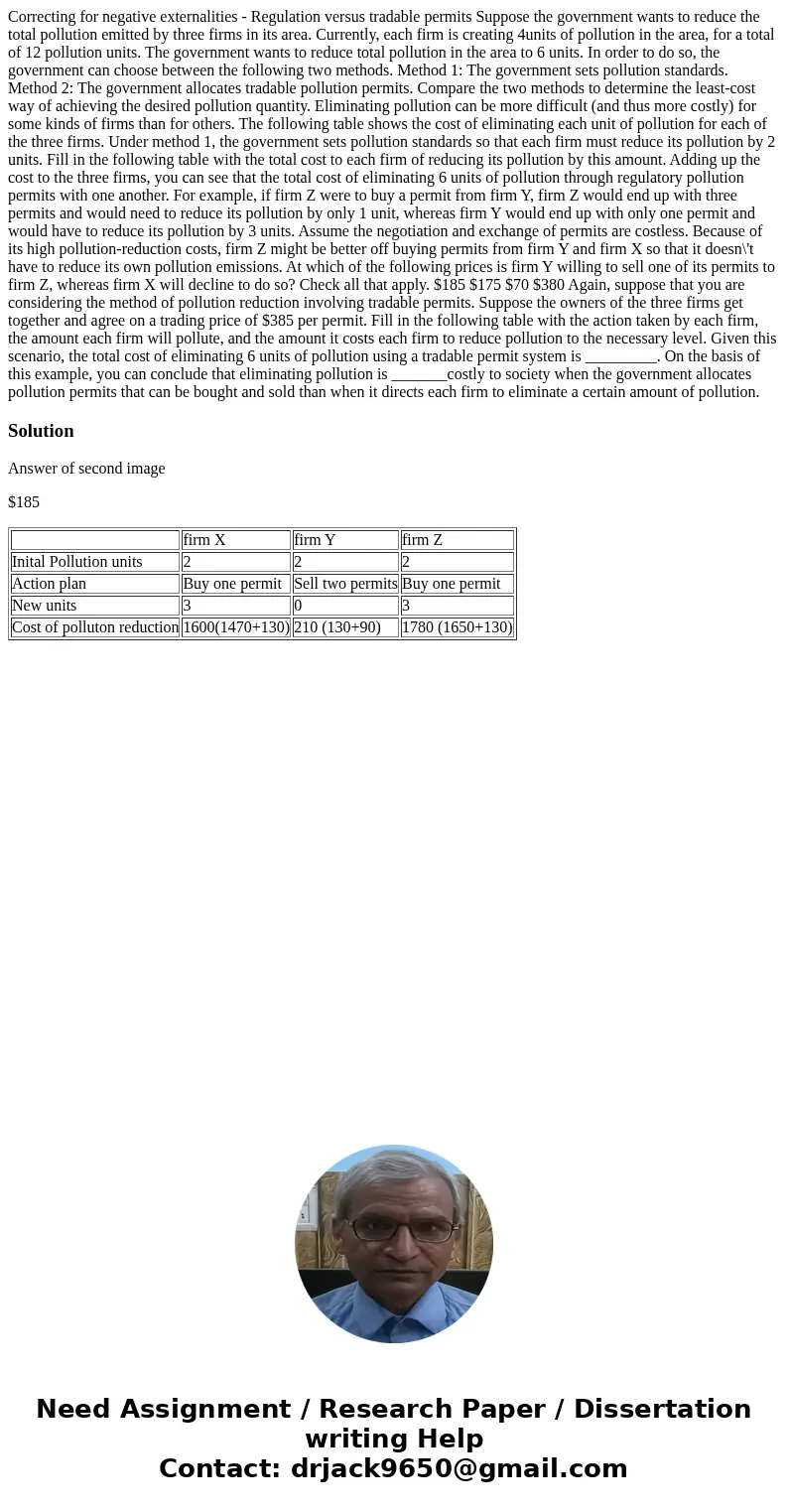Correcting for negative externalities Regulation versus tra
Correcting for negative externalities - Regulation versus tradable permits Suppose the government wants to reduce the total pollution emitted by three firms in its area. Currently, each firm is creating 4units of pollution in the area, for a total of 12 pollution units. The government wants to reduce total pollution in the area to 6 units. In order to do so, the government can choose between the following two methods. Method 1: The government sets pollution standards. Method 2: The government allocates tradable pollution permits. Compare the two methods to determine the least-cost way of achieving the desired pollution quantity. Eliminating pollution can be more difficult (and thus more costly) for some kinds of firms than for others. The following table shows the cost of eliminating each unit of pollution for each of the three firms. Under method 1, the government sets pollution standards so that each firm must reduce its pollution by 2 units. Fill in the following table with the total cost to each firm of reducing its pollution by this amount. Adding up the cost to the three firms, you can see that the total cost of eliminating 6 units of pollution through regulatory pollution permits with one another. For example, if firm Z were to buy a permit from firm Y, firm Z would end up with three permits and would need to reduce its pollution by only 1 unit, whereas firm Y would end up with only one permit and would have to reduce its pollution by 3 units. Assume the negotiation and exchange of permits are costless. Because of its high pollution-reduction costs, firm Z might be better off buying permits from firm Y and firm X so that it doesn\'t have to reduce its own pollution emissions. At which of the following prices is firm Y willing to sell one of its permits to firm Z, whereas firm X will decline to do so? Check all that apply. $185 $175 $70 $380 Again, suppose that you are considering the method of pollution reduction involving tradable permits. Suppose the owners of the three firms get together and agree on a trading price of $385 per permit. Fill in the following table with the action taken by each firm, the amount each firm will pollute, and the amount it costs each firm to reduce pollution to the necessary level. Given this scenario, the total cost of eliminating 6 units of pollution using a tradable permit system is _________. On the basis of this example, you can conclude that eliminating pollution is _______costly to society when the government allocates pollution permits that can be bought and sold than when it directs each firm to eliminate a certain amount of pollution.

Solution
Answer of second image
$185
| firm X | firm Y | firm Z | |
| Inital Pollution units | 2 | 2 | 2 |
| Action plan | Buy one permit | Sell two permits | Buy one permit |
| New units | 3 | 0 | 3 |
| Cost of polluton reduction | 1600(1470+130) | 210 (130+90) | 1780 (1650+130) |

 Homework Sourse
Homework Sourse